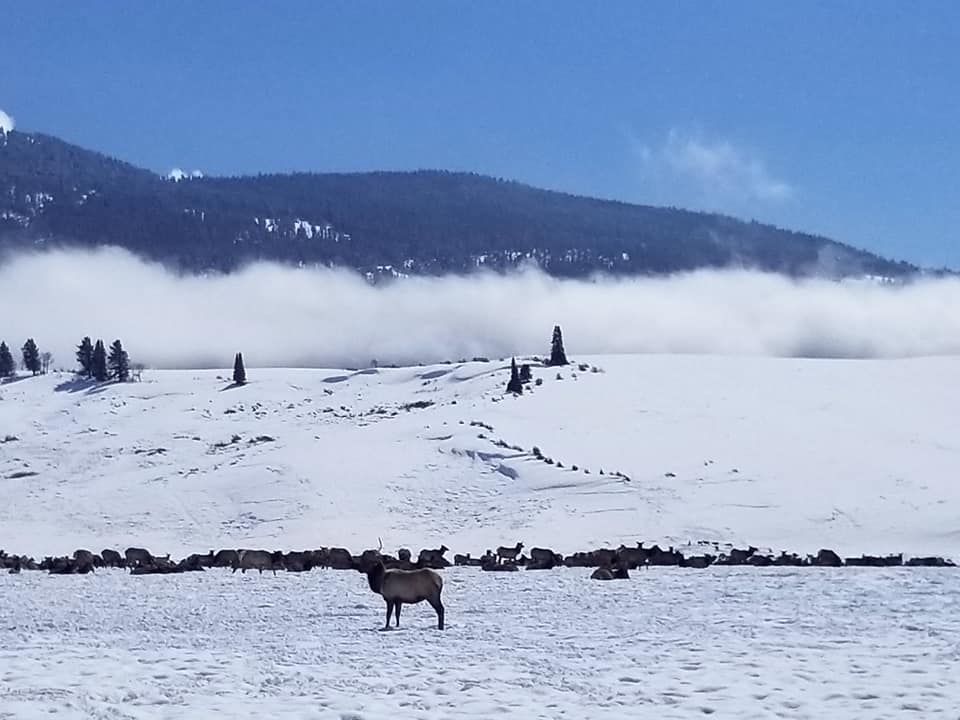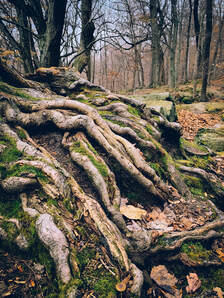|
How is COVID-19 affecting National Parks and those that make them their livelihoods? My good friends Jeremy and Emily were in Wyoming, visiting Grand Teton and Yellowstone. Jeremy offered this perspective on what it takes to maintain nature: "A moment to reflect as we leave this wintery wonderland and return back to the reality of a COVID-19 world. We may be facing unprecedented challenges with social systems, with our supply chains and economy. In Jackson Hole we met many people whose lives are about to fundamentally change. Being in the tourism / hospitality industry they are facing massive layoffs with no hope of alternative employment or unemployment compensation. Many are leaving, as the rent prices are close to that of Seattle. The Commercial properties are closing permanently as they cannot afford $60k a month leases. This all puts into perspective what it takes to keep wild areas wild, even in the current commercialized world where you can visit national parks on a whim. This may not be the case in the future, or there won't be as big of an industry around it.
. Enjoy nature as you can. Stay safe as you do, and if we end up with quarantines of course follow them, but until that happens - you'll find us in the woods." . Pronouns: He/Him and She/Her . Wyoming - This land originally held in stewardship by the Arapaho, Arikara, Bannock, Blackfeet, Cheyenne, Crow, Gros Ventre, Kiowa, Nez Perce, Sheep Eater, Sioux, Shoshone and Ute tribes (and possibly others). . Pics Courtesy of Jeremy. . Have you noticed changes in the outdoors and outdoor spaces due to COVID-19?
0 Comments
What do rock stacks have to do with Leave No Trace? Apparently, a lot. More scientists, conversationists, and park rangers are requesting that folks stop rock stacking when they're out and about on the trail. Why's it a big deal? Is it actually a big deal?
Where the heck does rock stacking even come from? Well, according to my Cairn Terriers, Lucy and Charlie, rock stacks aren't real "Cairns," which are dedicated memorials or landmarks. These rock stacks that are cropping up throughout the wild woods are done more for artistic or "fun" reasons. Sometimes, for meditation - and the popularity of them may have sprung up from a 1987 new age movement called the Harmonic Convergence. I belong to a number of hiking groups on FB (imagine that) - and I've seen this topic crop up a number of times recently. And it's always incredibly and unnecessarily tense. The counter-arguments usually focus on how extreme it is to target things like rock stacks as part of Leave No Trace, and if the environment survives hikers, kayakers, etc. it can survive a couple of rocks stacked up. It isn't always just one or two rocks - many beaches in the Northwest and other areas are completely covered with rocks stacks and a lot of them. (Please click links for slideshow pic credits). Parks have specific guidelines, as well as the Leave No Trace Principles, that help to curtail the impact humans have in those areas. It's important to abide by them, even if they don't make sense at the moment. Like the rock stacks, or staying on the path. Moving rocks can impact the natural habitat for those critters that call it home. It can disrupt waterways. It affects game trails. When you move a rock, you might also be unknowingly moving critters, fungus, bacteria, seeds, etc. to another area that didn't have those types before. For example, someone on Insta gathered rocks from five different state parks they visited and in the final one made a rock stack. Cool idea, except they most likely brought in seeds, etc. from other states that may not have been present. Also, safety, first! A lot of National Parks and hiking areas use stacked rocks (actual cairns) to mark paths - such as Dolly Sods in P.A. Hikers can easily get lost when you start adding your own directional markers. Rock stacks can be beautiful - they really are art - and made of "natural" bits, so it's easy to forget that just because it's pretty, doesn't mean it doesn't have a negative effect. And that when you're in the great wild, that it doesn't belong to you - it isn't your backyard. You're a steward of the land you visit. So remember, leave it how you found it or with as little impact as possible. Leave No Trace isn't about doing it perfectly - and I'll say this again and again and again. But it is about learning, growing, and doing what you can when you can. What do you think about rock stacking? Leave a comment below or contact me here. Why is it so expensive to "go green"? Cost doesn't just deter folks from getting involved in outdoor activities and adventures, but from going "green." Let's face it, it's a privilege to be able to focus on earth-green instead of money-green. Lots of my friends share articles all the time on things you can easily do, but they almost always cost $$ and sometimes a lot of it - everything from recyclable bamboo toilet paper and installing solar lights, to buying bulk at Whole Paycheck Foods (their food is amazing, just expensive for a lot of folks). It's easy to say not to use one-off plastics when you don't live in Flint, MI and rely on bottled water. Even the blue recycle bags required by many cities cost anywhere from .25 to .40 cents a bag. It adds up, and quickly. Luckily, though, there's lots of things you can do that will help the environment AND not cost you big bucks. Check out some ideas below:
- Cutting down on single use plastics:
- At home:
- Out...or In...with the Old
Obviously, this list is FAR from exhaustive. And it's never about doing it all, or doing it perfectly - it's about doing what you can, when you can. If you can afford the big-ticket green items, go for it, if not, then implement what you're able to without breaking the bank. Going greener doesn't have to be privilege, we just make it seem like that. What are some ways you've implemented affordable "green" or "sustainable" changes in your life/home? Comment below or contact me here! |
Archives
March 2021
Categories
All
|


